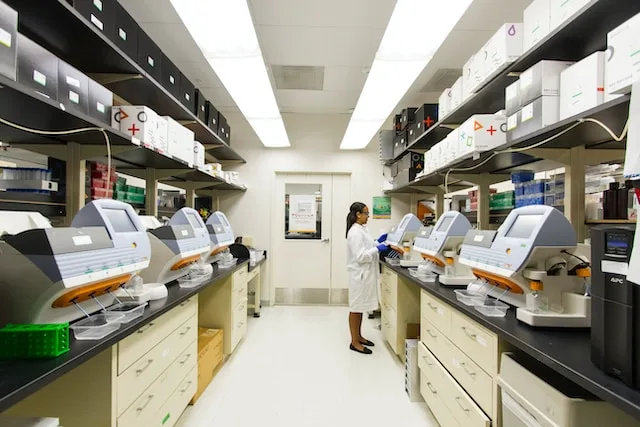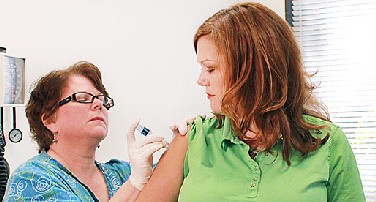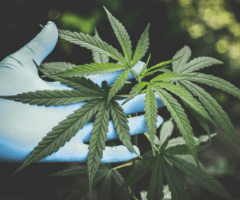Common Treatment Options for Lymphedema

Are you someone who has been diagnosed with lymphedema? If so, then you may have questions about the treatment options available to you. Lymphedema is a chronic condition that affects many people around the world and unfortunately, there is no known cure. However, there are numerous treatment plans available to help manage symptoms and improve quality of life. In this blog post, we’ll discuss common treatments for lymphedema such as manual lymph drainage (MLD), compression garments, exercise programs, bandaging techniques, self-care practices, and other therapies. We hope that gaining a better understanding of these treatments will help provide insight into which ones might best work for your needs.
Lymphatic Drainage Options
This therapy involves gentle, rhythmic massaging to stimulate the flow of lymph and reduce swelling. The process focuses on utilizing specific hand strokes and movements that follow the direction of lymph flow. In combination with Lymphatic Drainage, other drainage options include the use of pneumatic pumps. These devices inflate and deflate intermittently, mimicking the body’s natural lymphatic pump, thus moving the lymph fluid from a swollen area to a region where the lymphatic system is functioning normally. These techniques, while effective, should always be performed by a trained professional to ensure proper technique and avoid potential complications.
Compression Therapy
Compression therapy is another common and effective treatment for lymphedema. It involves using specialized garments such as elastic stockings or bandages to provide sustained pressure on the affected area. This helps to prevent the accumulation of lymph fluid and aids in its return to the circulatory system. Compression garments are typically custom-fitted to ensure maximum effectiveness and comfort. Some patients may also benefit from an adjustable compression wrap, which can be easier to use than traditional bandages. As with any treatment, it’s important to consult with a healthcare provider to determine the best course of action.
Complete Decongestive Therapy
Complete Decongestive Therapy (CDT), often considered the gold standard for lymphedema treatment, is a comprehensive approach that combines various treatment methods to effectively manage lymphedema. This therapy usually involves two phases. The initial phase, or the Intensive Phase, is focused on reducing lymphedema through daily treatments administered by trained therapists. This typically includes manual lymph drainage, compression bandaging, skincare, and exercise.
The second phase, also known as the Maintenance Phase, aims to preserve the results achieved in the first phase. This involves a personalized self-care regimen including the continuous use of compression garments, skin care, self-manual lymph drainage, and a tailored exercise program. CDT is a patient-centered approach, aiming to empower patients to manage their condition independently and maintain their quality of life. As with all lymphedema treatments, it’s essential to discuss the suitability of CDT with your healthcare provider.
Exercise and Physical Therapy
In order to effectively manage lymphedema, physical therapy and exercise are essential. They work hand in hand with the other treatment modalities to effectively reduce swelling and improve the functionality of the affected limb. Exercise programs are typically customized to fit the individual’s condition and aim to promote lymph flow, increase mobility, and improve strength. They may include low-impact activities such as swimming, yoga, or walking, which are safe for individuals with lymphedema.
Physical therapy, on the other hand, offers targeted interventions to manage lymphedema symptoms. Trained lymphedema therapists may use techniques like soft-tissue mobilization, stretching, and strength-building exercises, among others. The goal is to enhance lymphatic function, improve physical endurance, and maintain the range of motion. It’s worth noting that any exercise regimen should begin under the supervision of a healthcare provider or trained therapist to ensure safety and effectiveness. As always, it’s important to communicate with your healthcare provider before starting any new exercise or physical therapy program.
Medications for Lymphedema
While there is no specific drug that can cure lymphedema, certain medications can help manage its symptoms and complications. For instance, antibiotics may be used to treat and prevent skin infections, a common issue in people with lymphedema. Pain relievers can be beneficial in managing discomfort associated with the condition.
Some healthcare providers may recommend diuretics, also known as water pills, to help remove excess fluid in the body. It’s crucial to note that this type of medication should be used cautiously and under strict medical supervision as there are concerns about its long-term effectiveness and potential side effects.
Another class of drugs, known as benzopyrones, may be used to stimulate the body’s protein-digesting system and reduce swelling. However, these are typically used as a last resort and are not a standard treatment due to the potential risk of severe side effects.
Lymphatic Massage
Lymphatic massage, also known as lymphatic drainage or manual lymph drainage, is a specialized massage technique that can be utilized in the treatment of lymphedema. The purpose of this massage is to stimulate the lymph system and encourage the flow of lymph fluid away from swollen areas towards healthy lymph nodes, where it can be drained into the bloodstream. This process helps to reduce swelling and improve overall lymphatic function. The massage techniques are gentle and rhythmic, and they are specifically designed to mimic the natural movements of the lymphatic system.
Lymphatic massage can be performed by a trained lymphedema therapist, who can teach patients how to perform self-massage as part of their daily lymphedema management regimen. It’s important to note that while lymphatic massage can be beneficial, it should always be performed in conjunction with other lymphedema treatments, such as wearing compression garments and following an approved exercise program. As with all lymphedema treatments, it’s crucial to discuss this therapeutic option with your healthcare provider.
Lifestyle Modifications
Adjusting your lifestyle can significantly contribute to the management of lymphedema. A balanced diet, regular exercise, optimal weight maintenance, and proper skin care are all part of this key strategy.
Eating a balanced diet helps maintain a healthy weight, which is crucial as excess weight can put added pressure on the lymphatic system and exacerbate lymphedema symptoms. Your diet should be rich in proteins and fiber, and low in salt to limit fluid retention.
Regular exercise, as already mentioned, promotes lymph drainage and improves physical fitness. It’s important to engage in low-impact activities that you enjoy, which can motivate you to maintain regular exercise habits.
In conclusion, while there is no known cure for lymphedema, there are numerous treatment options available to manage symptoms and improve overall quality of life. The key is to work closely with your healthcare provider to develop a personalized treatment plan that fits your needs and goals. Whether it’s manual lymph drainage, compression therapy, exercise programs, or other therapies, the ultimate goal is to improve lymphatic function and reduce swelling, allowing you to live your life to the fullest. So don’t lose hope – with proper treatment and self-care practices, it is possible to effectively manage lymphedema and maintain a good quality of life.






